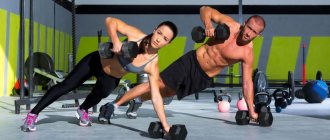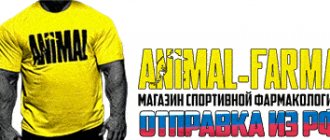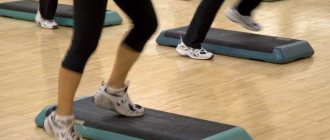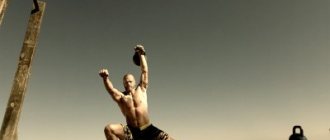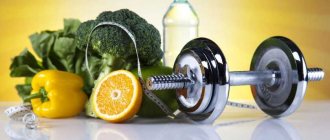Greetings to everyone who loves sports and an active lifestyle. Today we will talk about what basic exercises are and what their specifics are. Any beginner who crosses the threshold of the gym already knows that the base needs to be done frequently. But in practice, even experienced athletes are often confused in the classification of exercises and their technical features. Therefore, to avoid serious mistakes in training, we will delve deeper into this category of exercises and how to use them correctly in a training program.
What are basic exercises
The concept itself received maximum popularization in bodybuilding. This term characterizes multi-joint movements, that is, those that involve 2 or more joints. Exercises that involve only 1 joint are called isolating exercises. This is the best definition I recommend using. This way you will never go wrong. Although there are some exceptions, which we will talk about in the following blocks.
The concept of “basic” may be perceived differently in different types of strength sports. For example, in weightlifting, the clean and jerk is considered a basic exercise not because it involves a lot of joints, but because it is a competitive exercise. Those movements that improve performance in it (for example, thrusters) are called auxiliary. Therefore, you must understand within what sport the term “base” is mentioned. In the mass understanding, that is, in amateur or professional bodybuilding, it is extremely simple, because it is determined by the number of working joints.
Why is the base important?
I always see pictures of an over-experienced instructor insisting that everyone do the basics. But the paradox is that not everyone can explain the reasons why these exercises are so popular. So, let's look at the main advantages:
- These exercises use more muscle fibers. That is, the more muscle fibers you recruit during movement, the faster you will progress in mass and strength.
- Such exercises (based on the previous point) cause more stress in the body, causing it to produce more anabolic hormones. The greater the response, the more growth hormone, testosterone and other hormones will be released in the body.
- Such movements are more practical in everyday life (for example, you will be much more likely to squat, pull something from the floor, or press in front of/above you than to do bicep curls).
- Exercise allows you to speed up your progression as quickly as possible. This applies equally to both beginners and pros.
Also, basic movements are in most cases safer because many additional stabilizer muscles are involved during their execution.
Advantages of the basic program for mass
First, following a core exercise program creates an athletic posture. Secondly, testosterone increases. Thirdly, muscle growth processes are launched. It is important to bring the body to the limit of physical capabilities so that it wants to expand this limit - the last repetition of the exercise should be given with great difficulty, leaving no strength. In hypertrophy, this technique is called “training to failure.”
In addition, performing multi-joint compound exercises with heavy weights and low repetitions recruits fast-twitch muscle fibers. Such training activates the functioning of the nervous system and increases the production of hormones (primarily testosterone and growth hormone), which are important for the rapid pumping of muscles. Read more in the material “What makes muscles grow?”
Gaining weight during training
For most beginners (especially ectomorphs who are prone to thinness), muscle energy depots are very limited, and after washing out glycogen reserves with excessive training, there is literally no energy left in the body for the synthesis of new muscle tissue. The basic program does not require large energy depots, it requires full dedication in a short and high-intensity workout.
Unlike training with a large number of different exercises and a high number of repetitions (which is how beginners usually pump their muscles), the basic program primarily affects the growth of the muscle fiber itself, and not the sarcoplasm. In addition, due to the processes of hypertrophy, the fiber structure becomes more dense and elastic - as a result of which those same “steel muscles” are formed.
What is the difference between basic exercises and isolation exercises?
There is an extremely ridiculous stereotype that the base builds muscle, and isolation allows you to work it out better, adding peaks, relief, etc. However, your muscle shape is determined by your genetics, and therefore no amount of isolation will help change it. This is important to understand so that you can clearly assess the difference between the two types of exercises.
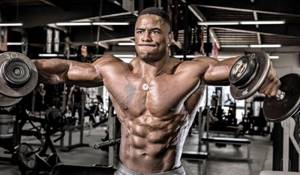
The only difference is that the basic movements involve more muscles, especially if you work with free weights. Simply put, they are heavier and more voluminous, so it is more difficult for the body to adapt to them, which means it will respond better to them (we are only talking about an increase in strength and mass).
Let's summarize the comparison:
- Technically, basic differ from isolating only in that the latter use one joint (by one we mean one type, not one joint).
- Another difference is that the base almost always recruits more muscle fibers. As a result, weight gain will be faster.
For example, bent-over dumbbell flyes to pump up the rear delts are an isolating movement. To work this beam, small weights are needed, otherwise other muscles (back, trapezius, etc.) will take the load.
Therefore, you shouldn’t almost pray for basic movements, it’s just a tool that provides great benefits, especially for beginners. You can also change the isolation base when you need to consciously reduce the intensity of your training. For example, during recovery after childbirth or during rehabilitation from injuries.

Finally, I will clarify the issue of basic exercises for biceps, because the lion’s share of athletes are confused about this issue and spread misconceptions. All mass-gaining movements that you do for the biceps brachii muscle are isolating in nature. Often the barbell curl is presented as a basic movement, although it is not. With the correct technique, only the elbow joint works. Otherwise, you are doing the lift incorrectly.
But pull-ups on the horizontal bar with a reverse grip are just a basic biceps exercise, because the work involves the elbow and shoulder joints. Therefore, when you do an exercise, watch such nuances; this is a great way to eliminate errors in technique.
Feedback from Fitseven readers
Below are reviews from Fitseven readers about putting the basic training program into practice. You can leave your feedback in the comments block.
TrueS
When I started training, I weighed 56 kg with a height of 184 cm. Using this program and a large number of calories, I managed to gain up to 64 kg in 3 months. It seems to be good, the mass continues to grow.
Stanislav
I've been working out with a trainer for a little over a month. Chronic acne - height 195, weight was 71. Now it’s already 75. Total for the month is about 4 kg.
Biomax
With a height of 191 and a weight of 74 kg, I gained 6 kg in a month from 2 cans of gainer, 1 roll, potassium orotate and creatine monohydrate. Guys, the program is working, everything is clear and understandable.
Marat
The program is good, I have been looking for something like this for a long time. Three exercises are enough if you give it your all. For variety, I alternate between heavy (5 repetitions) and light (10 repetitions), accordingly selecting the weight for the number of repetitions. Before that, I tried all possible splits, fullbody, etc., and realized that the base really makes the difference.
Correct technique and types of basic exercises
Let's move on to a detailed consideration of all categories of basic movements. If you want to achieve sustainable muscle gain, then these exercises should make up up to 80% of your entire training program, regardless of the cycle and goals.
On the chest
Basic movements for the pectoral muscles include:
- Any presses with either dumbbells or a barbell (on a horizontal or inclined bench, in a hammer or smith).

- Pushups.

- Dips.
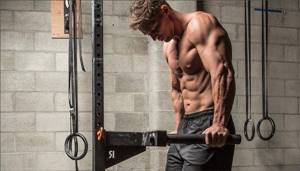
To increase the effectiveness of each movement, you should not fully straighten your arm at the elbow. It is also worth remembering that the chest is included in the work at the bottom, when the bar is closer to the chest, so the amplitude should be full. I also want to remind you that to pump up your chest on the uneven bars, you need to tilt your body forward.
On the back
Most of the movements for this muscle group are basic in nature, which is due to the specifics of the work of the back muscles. These include:
- Pull-ups on the horizontal bar (with your own weight or with additional weights).
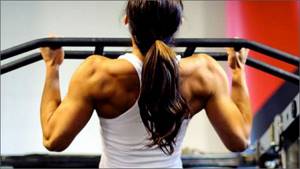
- Bent-over barbell row.
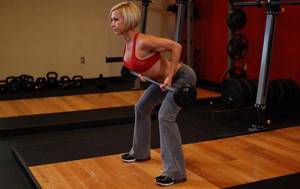
- Standing swings with kettlebells.
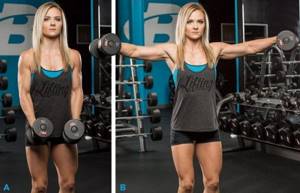
- Deadlift.

- Vertical block traction.

- Horizontal pull on the block.
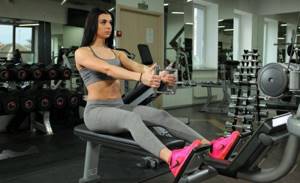
I would like to note that compound deadlifts (Romanian and deadlifts) cannot be classified into one category due to the large number of muscles involved. Therefore, deadlifts are usually classified as a back group, and Romanian deadlifts are usually classified as a leg group. Although it would be more correct to put them in a separate category, which includes exercises for all muscle groups.
In all exercises, it is important to remember that you need to pull with your back muscles, and not with your arms or using inertia.
On your feet
The situation with the legs is the same as with the back. Almost all the main movements are basic:
- Squats.
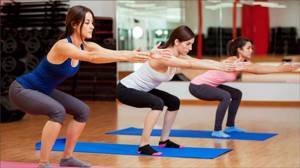
- Hack squats.
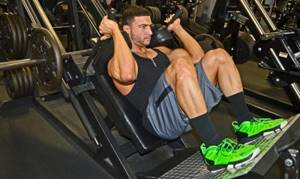
- Lunges (any variants).
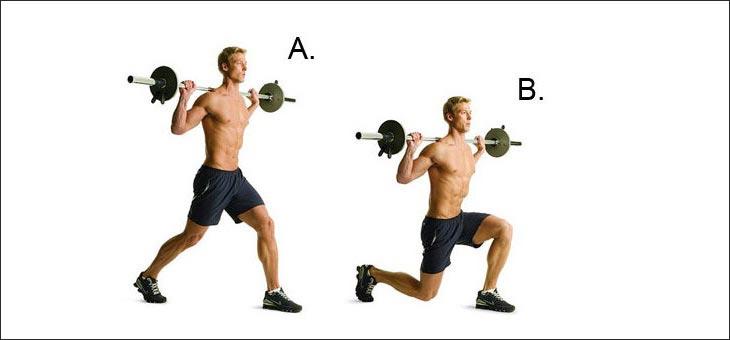
- Romanian cravings.
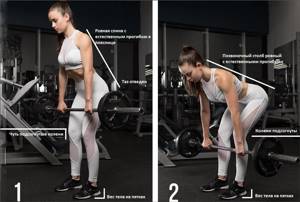
- Platform press.
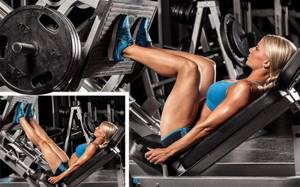
- Gluteal bridge.

Also, any types of jumps are often considered basic, although in fact they are considered plyometric. They are not usually done in the gym, although they are an ideal way to train explosive leg power in TA and CrossFit.
On shoulders
For deltoids, there are only two completely basic movements:
- Any types of bench presses while standing or sitting (with a barbell, dumbbells, Arnold press and others).
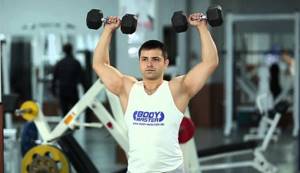
- Barbell row to the chin.

All other exercises are isolating in nature.
In your arms
As I already said, all standard biceps exercises are isolation exercises. Of course, this will not prevent you from pumping up powerful arms, but this is the classification of movements. But in the only basic movement (pull-ups with a reverse grip), the arms work less than the back, so making it the main exercise for the biceps is very doubtful.
For triceps, the following are considered basic:
- Bench press with a narrow grip (in a Smith machine or on a horizontal bench).
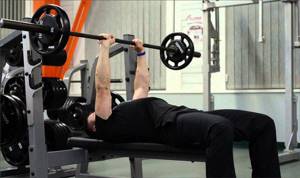
- Reverse push-ups from a bench.

Base for the back muscles
Without basic exercises you can't build a powerful back. Only the most effective ones should be included in the program.
Pull-ups
Beginner athletes do not like this exercise. Experienced bodybuilders love to do pull-ups.
The classic technique looks like this:
- Hang from the horizontal bar. Hands are positioned 15 centimeters wider than shoulders. Mainly only the forearms are tensed.
- Take a deep breath and pull yourself up, then exhale boldly;
- Return to the starting point
Deadlift
It is considered one of the most difficult basic exercises, especially with large weights on the barbell. Develops the muscles of the back, legs and arms.
Technique:
- The legs should be slightly narrower than the shoulders, the feet should be parallel;
- The back is straight, the pelvis moves back, a natural deflection should be maintained in the lower back;
- Bend your body forward, bend your knees slightly, lower your arms down and grab the bar with a comfortable grip;
- Gently lift the barbell, smoothly straightening your legs. After getting up, you can straighten your back. The shoulder blades are brought together.
- Exhale and slowly lower yourself until the weights on the bar hit the floor.
Bent-over barbell row
With the help of this exercise, strength increases significantly, muscle volume in the back increases, flexibility and posture become better, and performance in the main strength exercises increases.
Technique:
- Feet should be shoulder-width apart and slightly bent;
- Bend over and grab the apparatus;
- Take a deep breath and pull the barbell toward your waist;
- Hold this position for a moment, exhale and lower the bar to the floor.
Head Pull
This exercise is most similar to a pull-up, but it is much easier to do. It is recommended for people who do not yet know how to do pull-ups correctly.
Technique:
- Sit on the top block and press your feet to the ground;
- You should grab the bar wide, then bend your arms halfway;
- The back must remain straight throughout the entire approach;
- Inhale and slowly pull the bar behind your head;
- After exhaling, you can return to the starting position;
- Work your back muscles and try to exclude your biceps.
Example workout
Let's look at examples of weight training for the gym and at home using only basic exercises. Beginners can train according to this scheme for up to 12-16 months, without even resorting to isolation exercises, but after that they will have to add variety to the program.
Remember that even the best exercises become less effective over time if done repeatedly. The body adapts to any load, including basic load.
At home
The arsenal of exercises for home is not so large, but it is enough to build high-quality muscles. Let's look at an example of a popular home workout for the whole body at a time (fullbody):
- Pull-ups on the horizontal bar.
- Pushups.
- Air squats.
- Lunges.
- Twisting.
If you don’t have dumbbells at home, then the program can be done even without weights.
In the gym
In the gym, the arsenal of possibilities is much greater, although athletes often neglect them, performing the same set of exercises for years. At the beginning, this brings excellent results, but by 3-4 months of training, the progression is reduced by almost half. Therefore, I advise you to make minimal changes to the plan every week, and globally change the entire training scheme every 8-10 weeks.
For an example of an effective workout, I’ll take a proven split for the chest and back:
- Pull-ups/horizontal block rows.
- Bench press.
- Bent-over dumbbell row.
- Hummer bench press.
- Horizontal thrust.
- Dumbbell flyes on an incline bench.
Alternating schemes are very effective for both experienced bodybuilders and beginners, so I recommend using them in your practice.
Foot base
It's quite difficult to train legs, so many athletes decide that they don't need it. Meanwhile, you cannot build a powerful physique without pumping up this muscle group. Let's look at the basic basic exercises.
Squats
Anyone who regularly squats with a barbell has every chance of developing his physique.
Technique:
- Stand facing a power rack, place the bar on your trapezius and grab it with a medium grip slightly wider than shoulder-width apart;
- Step back;
- Take a deep breath and carefully squat down to parallel;
- Use your hips to slowly rise up;
- After this, you can exhale.
Calf raise
Calves are trained by a small percentage of people in fitness centers. At the same time, developing them to the planned size is not as difficult as it seems.
Technique:
- Set the desired weight, adjust the height and stand on the machine;
- Your feet should be placed on the edge of the step;
- Smoothly push your feet down;
- You can exhale and lift your heels.
Training Tips
Now let's look at the basic rules that will help make strength training as beneficial as possible:
- The correct ratio of basic and isolating exercises in the program is 80/20% (but not more than 70/30%).
- Basic loads place more stress on the central nervous system, therefore, to maintain health (immunity, nervous system, etc.), training should not be frequent.
- The base should always be performed at the beginning of the workout, while the muscles have energy reserves. Isolation exercises - towards the end of the lesson.
- It is better not to combine basic exercises into supersets. They already provide a lot of benefits, so you will only reduce their effectiveness.
Warm-up
Regardless of the type of physical activity, you should always warm up. This is relevant for girls and women, representatives of the stronger sex, old people, children, etc. Before loading, the muscles need to be warmed up, otherwise the risks of injury increase enormously, especially when performing basic movements.
Equipment
You need to use equipment wisely, otherwise it will do more harm than good. I advise you to only use gloves.
Sets and reps
Depending on the cycle. If the goal is to increase maximum strength, then it is better to work in a low-rep mode (3-5 repetitions). For hypertrophy – classic 8-10 repetitions. A man can train in this mode all the time, but for women it is better to perform a larger number of repetitions per set - from 10 to 15. The number of approaches for the exercise is from 3 to 4.
Nutrition and sports supplements
A lot has already been said about sports diets and nutrition regimens. However, in addition to quality nutrition, I recommend using the classic set:
- Protein.
- Creatine.
- Vitamin and mineral supplements.
- Omega-3.
Optional BCAA (preferably with glutamine) and green tea extract in tablets to improve performance.
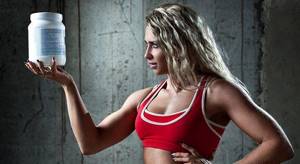
Girls gaining muscle mass
Day 1 Muscle groups trained: Legs
- Warm up on a cardio machine (Elliptical, Treadmill, Bike machine, Step machine) 10-15 min
- Plie squats with dumbbells and wide stance or squats with a small barbell
- Lunges with dumbbells around the gym
- Platform Leg Press
- Seated leg extensions + leg curls (superset)
- Standing dumbbell deadlift
- Calves in a standing/sitting machine
- Press leg raise on a lying bench + crunches (superset)
- Cardio 30-45 minutes according to your well-being and desire
Day 2 Muscle groups trained: Chest, Back, Shoulders, Arms
- Warm up on a cardio machine (Elliptical, Treadmill, Bike machine, Step machine) 10-15 min
- Dumbbell flyes lying on a horizontal bench
- Sitting vertical block row to the chest
- Hyperextension from parallel to the floor
- Standing dumbbell lateral raises
- Simultaneous dumbbell curls while sitting or standing
- Standing arm extension (triceps)
- Press leg raise on a lying bench + crunches (superset)
- Cardio 30-45 minutes according to your well-being and desire
Exercises are performed in 4 sets of 8-10 repetitions. Rest between sets from 1.5 to 3 minutes, between exercises up to 4 minutes. Working weights are moderate or more and are selected individually. The total duration of strength training without cardio is no more than 60 minutes. Training 3 times a week.
Watch also our other video - A set of sports nutrition for rapid muscle growth
Common mistakes
Let's look at popular mistakes that will be useful for both beginners and experienced athletes to pay attention to:
- Do not fully extend your knee and elbow joints. Always maintain minimal bending. Full extension of the arms and legs switches the load from the muscle to the joint, which negatively affects its health and makes the exercises less effective.
- In developmental training, you should give preference to basic loads, but the total number of repetitions should not be more than 28-30.
- To correct body weight, it is better to use only the base: such movements consume more calories.
- In pursuit of weight, athletes often neglect technique; this is a big mistake. Working with less weight but better technique will bring more benefits.
